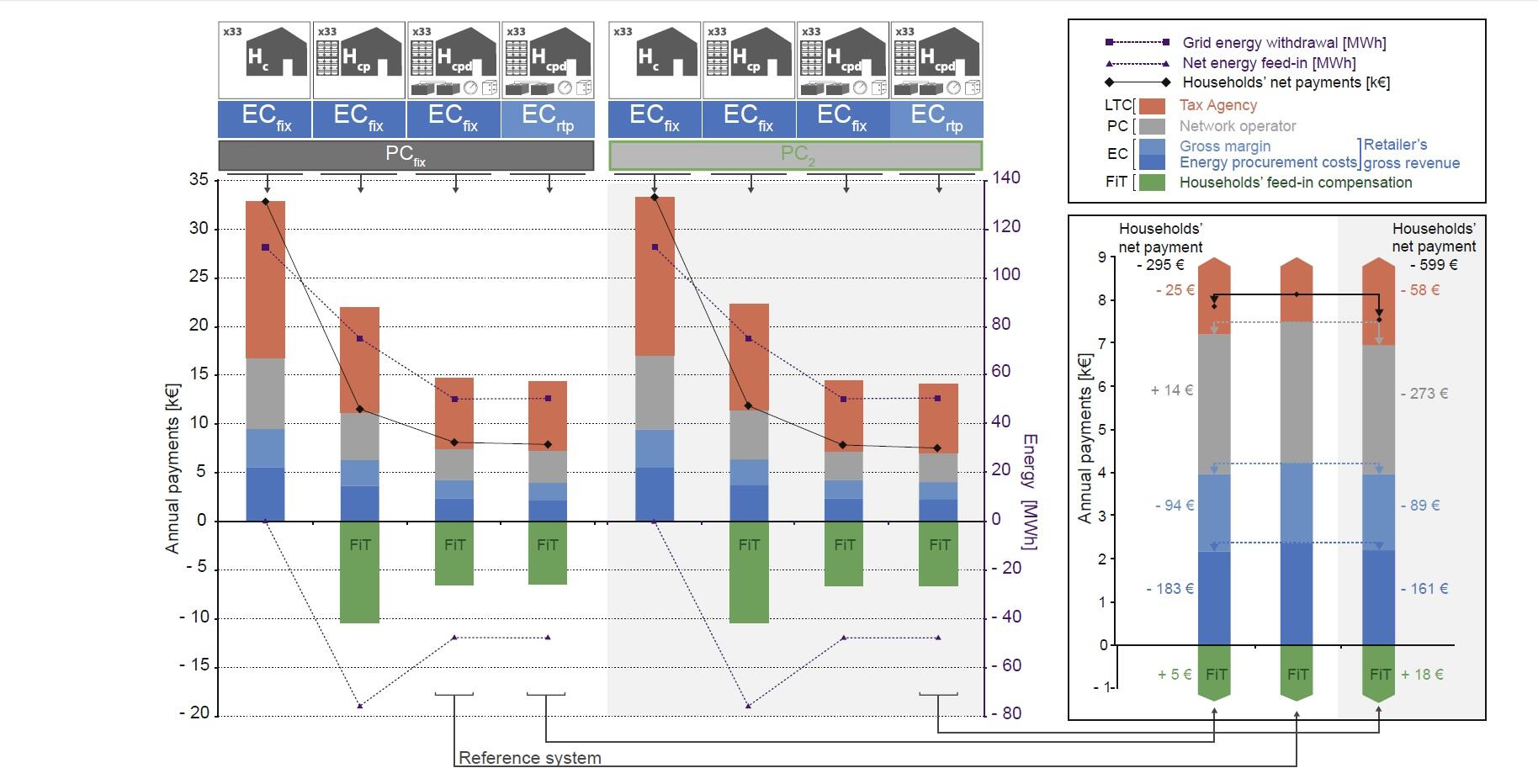Flexible electricity tariffs: Power and energy price signals designed for a smarter grid

Authors: Michael Schreiber, Martin E. Wainstein, Patrick Hochloff, Roger Dargaville
Abstract: Renewable energy is increasingly replacing carbon-based technologies worldwide in electricity networks. This increases the challenge of balancing intermittent generation with demand fluctuation. DR (Demand response) is recognized as a way to address this by adapting consumption to supply patterns. By using DR technology, grid withdrawal of DSM (demand side management) devices such as heat pumps, electric vehicles or stationary batteries can be temporally shifted. Yet, the development of an accurate control and market design is still one of the greatest remaining DR challenges. We present a range of flexible price signals that can address this by acting as effective demand control mechanisms. The different tariffs consist of combinations of flexible energy and power price signals. Their impact on the unit commitment of automatable DSM devices is tested for a set of German households. The financial outcome for the respective stakeholders are quantified. Our results suggest flexible power pricing can reduce overall demand peaks as well as limit simultaneous grid withdrawals caused by real time pricing incentives. Furthermore, we prove that inefficient designs of flexible power pricing can lead to undesired bidding of automatable devices. We propose a specific tariff design that shows robust network perfomance and reduces energy procurement costs.
Citation: Schreiber, Michael; Wainstein, Martin E.; Hochloff, Patrick; Dargaville, Roger. 2015. Flexible electricity tariffs: Power and energy price signals designed for a smarter grid. Energy 93:2568-2581.